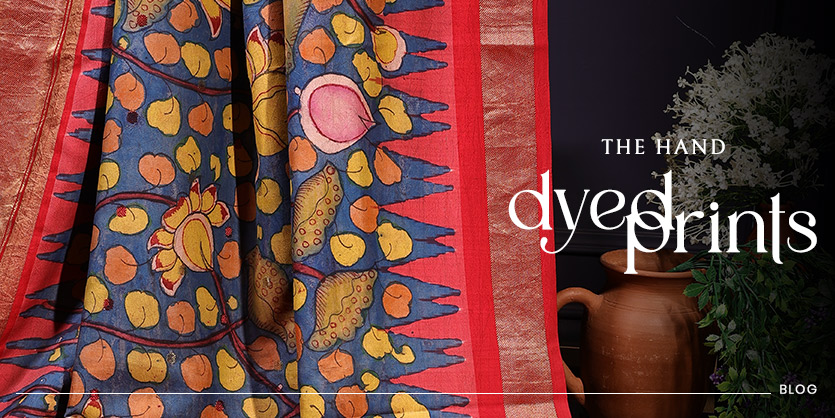
Hand Dyed prints
Kalamkari is an ancient hand-painting art that dates back to 3000 years ago. This art is also known as qualamkari. The term kalamkari comes from the Persian language. In Persian “Ghalam” denotes pen and “Kari” denotes craftsmanship. Sultan rulers of Golgonda made this ancient art popular in Andhra Pradesh, India.
Kalamkari involves craftsmanship in dyeing, block printing and hand painting the saree. It takes 23 steps to finish a single saree. Pedana a small town in Masulipatnam, is famous for its block-printed kalamkaris with natural dyes derived from plants and vegetables.
Temple town of Sri Kalahasthi is renowned for its hand-painted kalamkaris. Artisans hand-paint scenes from Indian mythology such as Ramayana & Mahabharatha in kalamkari sarees. Deities, aesthetic flowers, divine swans, peacocks, lotus flowers and trees of life are painstakingly drawn by artisans.
In Pothys, Kalamkari sarees are crafted with paintings that are inspired by tales of India. The Latest collection of Kalamkari sarees from Pothys is crafted with lotus buds and vine designs all over the body. Its pallu is crafted in a contemporary style with abstract prints. This saree collection is decorated with simple zari borders.
Kalamkari sarees from Pothys are crafted with enchanting designs with detailing. The sarees depict the tales of ancient India. The bodies of the sarees are painted with Buddha, Bodhi trees, deities, Gobi girls and peacock feathers. The love of Radha & Krishna is aesthetically printed in the body of the sarees and the divine swans with paisley patterns are weaved into the zari borders.
Styling Tip
Since the Kalamkari saree is decorated with artwork all over the body, choose a monochrome blouse. Accessorize yourself in a terracotta or oxidized silver jhumkas and bangles. Look ethereal with winged eyeliner and tinted cheeks.







